
Advertising is the practice and techniques employed to bring attention to a product or service. Advertising aims to put a product or service in the spotlight in hopes of drawing it attention from consumers. It is typically used to promote a specific good or service, but there are wide range of uses, the most common being the commercial advertisement.
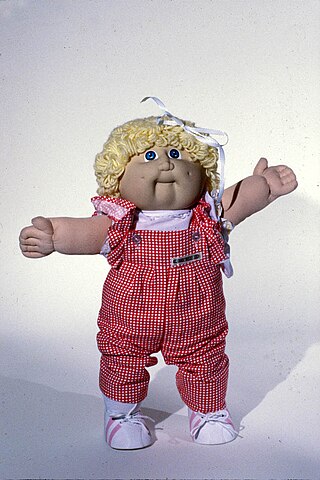
Cabbage Patch Kids are a line of cloth dolls with plastic heads first produced by Coleco Industries in 1982. They were inspired by the Little People soft sculptured dolls sold by Xavier Roberts as collectibles. The brand was renamed 'Cabbage Patch Kids' by Roger L. Schlaifer when he acquired the exclusive worldwide licensing rights in 1982.

Tate is an institution that houses, in a network of four art galleries, the United Kingdom's national collection of British art, and international modern and contemporary art. It is not a government institution, but its main sponsor is the UK Department for Culture, Media and Sport.

Cracker Jack is an American brand of snack food that consists of molasses-flavored, caramel-coated popcorn, and peanuts, well known for being packaged with a prize of trivial value inside. The Cracker Jack name and slogan, "The More You Eat The More You Want", were registered in 1896. Some food historians consider it the first junk food.
In marketing, brand management begins with an analysis on how a brand is currently perceived in the market, proceeds to planning how the brand should be perceived if it is to achieve its objectives and continues with ensuring that the brand is perceived as planned and secures its objectives. Developing a good relationship with target markets is essential for brand management. Tangible elements of brand management include the product itself; its look, price, and packaging, etc. The intangible elements are the experiences that the target markets share with the brand, and also the relationships they have with the brand. A brand manager would oversee all aspects of the consumer's brand association as well as relationships with members of the supply chain.
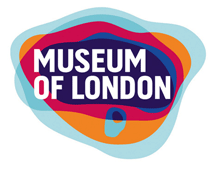
The Museum of London is a museum in London, covering the history of the city from prehistoric to modern times, with a particular focus on social history. It was formed in 1976 by amalgamating collections previously held by the City Corporation at the Guildhall Museum and of the London Museum. From 1976 to 2022, its main site was located in the City of London on London Wall, close to the Barbican Centre, as part of the Barbican complex of buildings created in the 1960s and '70s to redevelop a bomb-damaged area of the city. In March 2015, the museum revealed plans to move to the General Market Building at the nearby Smithfield site. Reasons for the proposed move included the claim that the current site was difficult for visitors to find, and that by expanding, from 17,000 square metres to 27,000, a greater proportion of the museum's collection could be placed on display. In December 2022, the museum permanently closed its site at London Wall in preparation for reopening in 2026 at Smithfield Market as the London Museum.

Portobello Road is a street in the Notting Hill district of the Royal Borough of Kensington and Chelsea in West London. It runs almost the length of Notting Hill from South to North, roughly parallel with Ladbroke Grove. On Saturdays it is home to Portobello Road Market, one of London's notable street markets, known for its second-hand clothes, pastries and antiques. Every August since 1996, the Portobello Film Festival has been held in locations around Portobello Road and, in 2015, Portobello Radio was founded as the area's community radio station.

Lucky Strike is an American brand of cigarettes owned by the British American Tobacco group. Individual cigarettes of the brand are often referred to colloquially as "Luckies."
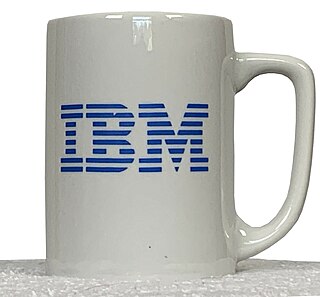
Merchandising is any practice which contributes to the sale of products to a retail consumer. At a retail in-store level, merchandising refers to displaying products that are for sale in a creative way that entices customers to purchase more items or products.
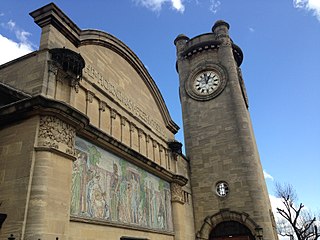
The Horniman Museum and Gardens is a museum in Forest Hill, London, England. Commissioned in 1898, it opened in 1901 and was designed by Charles Harrison Townsend in the Modern Style. It has displays of anthropology, natural history and musical instruments, and is known for its large collection of taxidermied animals. The building is Grade II* listed.

The Museum of Domestic Design and Architecture (MoDA) is a museum in North London, England, housing one of the most comprehensive collections of 19th- and 20th-century decorative arts for the home. The collection is designated as being of outstanding international value by Arts Council England.

The Museum of the Home, formerly the Geffrye Museum, is a free museum in the 18th-century Grade I-listed former almshouses on Kingsland Road in Hoxton, London. The museum's change of name was announced in 2019. The museum explores home and home life from 1600 to the present day with galleries which ask questions about 'home', present diverse lived experiences, and examine the psychological and emotional relationships people have with the idea of "home" alongside a series of period room displays.

Children's street culture refers to the cumulative culture created by young children. Collectively, this body of knowledge is passed down from one generation of urban children to the next, and can also be passed between different groups of children. It is most common in children between the ages of seven and twelve. It is strongest in urban working-class industrial districts where children are traditionally free to "play outside" in the streets for long periods without supervision.

The Postal Museum is a postal museum run by the Postal Heritage Trust. It began in 2004 as The British Postal Museum & Archive and opened in Central London as The Postal Museum on 28 July 2017.
Toy advertising is the promotion of toys through a variety of media. Advertising campaigns for toys have been criticized for trading on children's naivete and for turning children into premature consumers. Advertising to children is usually regulated to ensure that it meets defined standards of honesty and decency. These rules vary from country to country, with some going as far as banning all advertisements that are directed at children.

Brighton Toy and Model Museum is an independent toy museum situated in Brighton, East Sussex. Its collection focuses on toys and models produced in the UK and Europe up until the mid-Twentieth Century, and occupies four thousand square feet of floor space within four of the early Victorian arches supporting the forecourt of Brighton railway station. Founded in 1991, the museum holds over ten thousand toys and models, including model train collections, puppets, Corgi, Dinky, Budgie Toys, construction toys and radio-controlled aircraft.

St John's Notting Hill is a Victorian Anglican church built in 1845 in Lansdowne Crescent, Notting Hill, London, designed by the architects John Hargrave Stevens (1805/6–1857) and George Alexander (1810–1885), and built in the Victorian Gothic style. Dedicated to St John the Evangelist, the church was originally built as the centrepiece of the Ladbroke Estate, a mid nineteenth century housing development designed to attract upper- and upper middle-class residents to what was then a largely rural neighbourhood in the western suburbs of London.
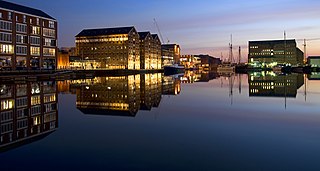
Gloucester Docks is a historic area of the city of Gloucester. The docks are located at the northern junction of the River Severn with the Gloucester and Sharpness Canal. They are Britain's most inland port.
The United States food and beverage industry has increased the amount of advertising that intensively and aggressively targets children through multiple channels. Food marketers know that the youth consumers have equal if not more spending power than adults, they hold purchasing influence, and have the potential to be lifelong consumers. The advertisements for products predominantly high in sugar and fat have increased and have had an effect on the major health epidemic in the US of Childhood obesity, and as such are inconsistent with national dietary recommendations. Food advertisements have moved from the television into the classroom. Marketing companies are exploring new creative techniques to reach their target audience, young children, through promotions, contests, and incentive programs. As a result, the US has progressively been placing regulations on how much advertising is allowed during children's programming.

The World Branding Forum is a global nonprofit organisation based in London, England. The forum runs various programmes and organises conference, workshops and seminars. It operates a newsroom and publishes industry news on its website. It is also a media partner for various industry events. The forum's industry recognition programme is the World Branding Awards, which it organises annually.





















